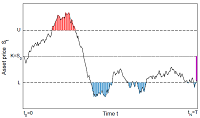25. Course-Prerequisite
Networks for Analyzing and Understanding Academic Curricula
P. Stavrinides and K.M. Zuev
Applied Network Science, vol. 8, article 19, April
2023.
[Web DOI
| Paper pdf | arXiv physics.soc-ph
2210.01269]
Abstract: Understanding a complex system
of relationships between courses is of great importance for
the university’s educational mission. This paper is
dedicated to the study of course-prerequisite networks (CPNs),
where nodes represent courses and directed links represent
the formal prerequisite relationships between them. The main
goal of CPNs is to model interactions between courses, represent
the flow of knowledge in academic curricula, and serve as
a key tool for visualizing, analyzing, and optimizing complex
curricula. First, we consider several classical centrality
measures, discuss their meaning in the context of CPNs, and
use them for the identification of important courses. Next,
we describe the hierarchical structure of a CPN using the
topological stratification of the network. Finally, we perform
the interdependence analysis, which allows to quantify the
strength of knowledge flow between university divisions and
helps to identify the most intradependent, influential, and
interdisciplinary areas of study. We discuss how course-prerequisite
networks can be used by students, faculty, and administrators
for detecting important courses, improving existing and creating
new courses, navigating complex curricula, allocating teaching
resources, increasing interdisciplinary interactions between
departments, revamping curricula, and enhancing the overall
students’ learning experience. The proposed methodology
can be used for the analysis of any CPN, and it is illustrated
with a network of courses taught at the California Institute
of Technology. The network data analyzed in this paper is
publicly available in the GitHub repository.




































